Fragmented, blurred, and rebuilt: reflections in the works of Costantino Gucci
- Advertisement -
by Margherita Bruni
Presented at Movimento alongside exclusive furniture designed for the gallery, “Self Reflections” marked the first solo exhibition of Tuscan designer Costantino Gucci.
Share
- 0shares
- Advertisement -
Before starting to read the next paragraphs, take a moment to think: among all the objects that fill your home, which is the one thing you can’t help but interact with every single day? It’s likely that many of you, upon reflection, will arrive at the same answer: the mirror. It is precisely this intimate, everyday encounter with our own reflection that designer Costantino Gucci – Founder of Studio Celo – examines in his artistic practice.
The mirror is, indeed, among the first objects we encounter in the morning, just after waking up, and one of the last we glance at before leaving the house. We own many of them, in different shapes and sizes — some so small we can carry them anywhere, tucked into the pockets of our jeans — always ready to remind us, or perhaps to reassure us, of the outward image we present to the world.
Gallery
Open full width
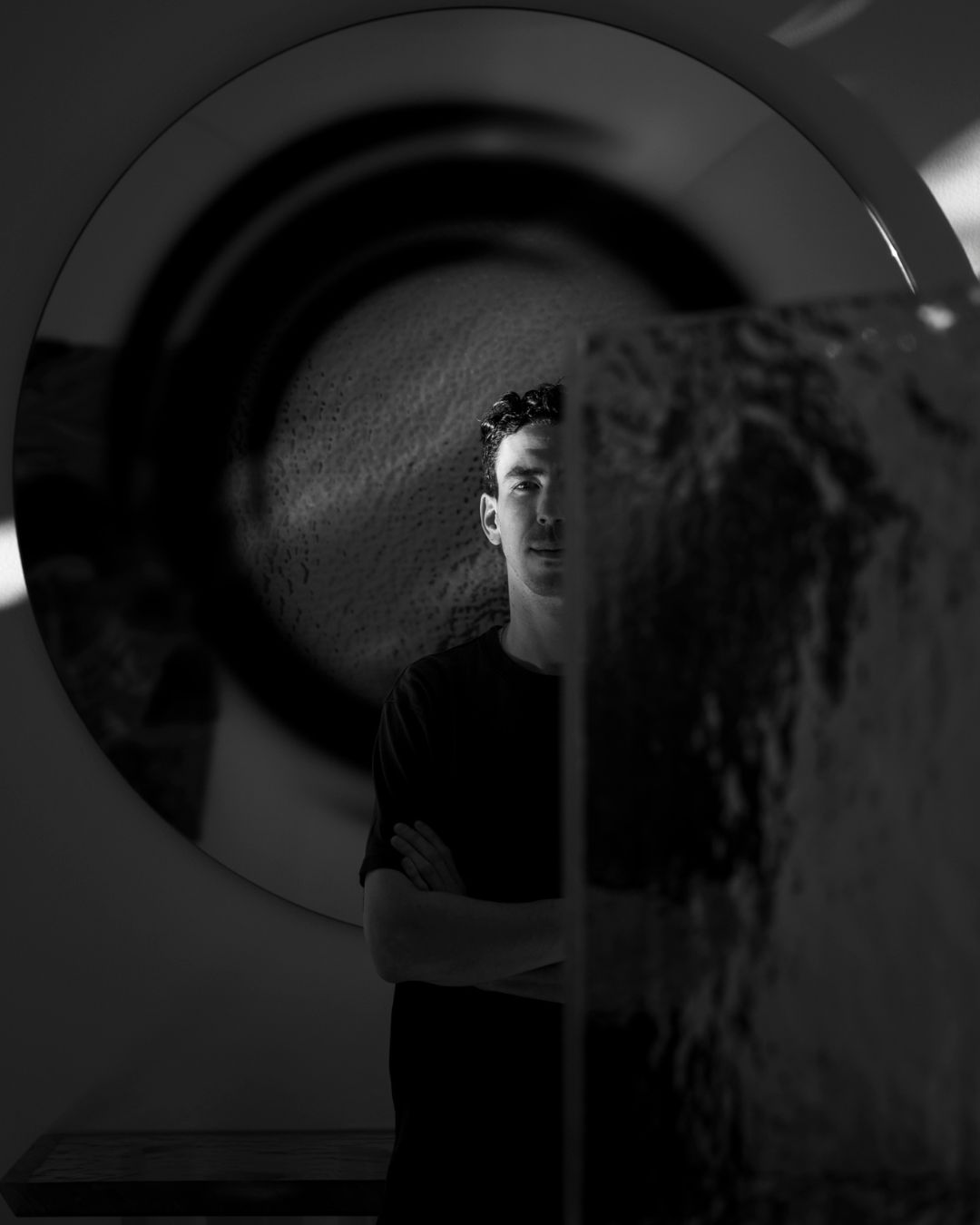 Costantino Gucci ©Dario Borruto
Costantino Gucci ©Dario Borruto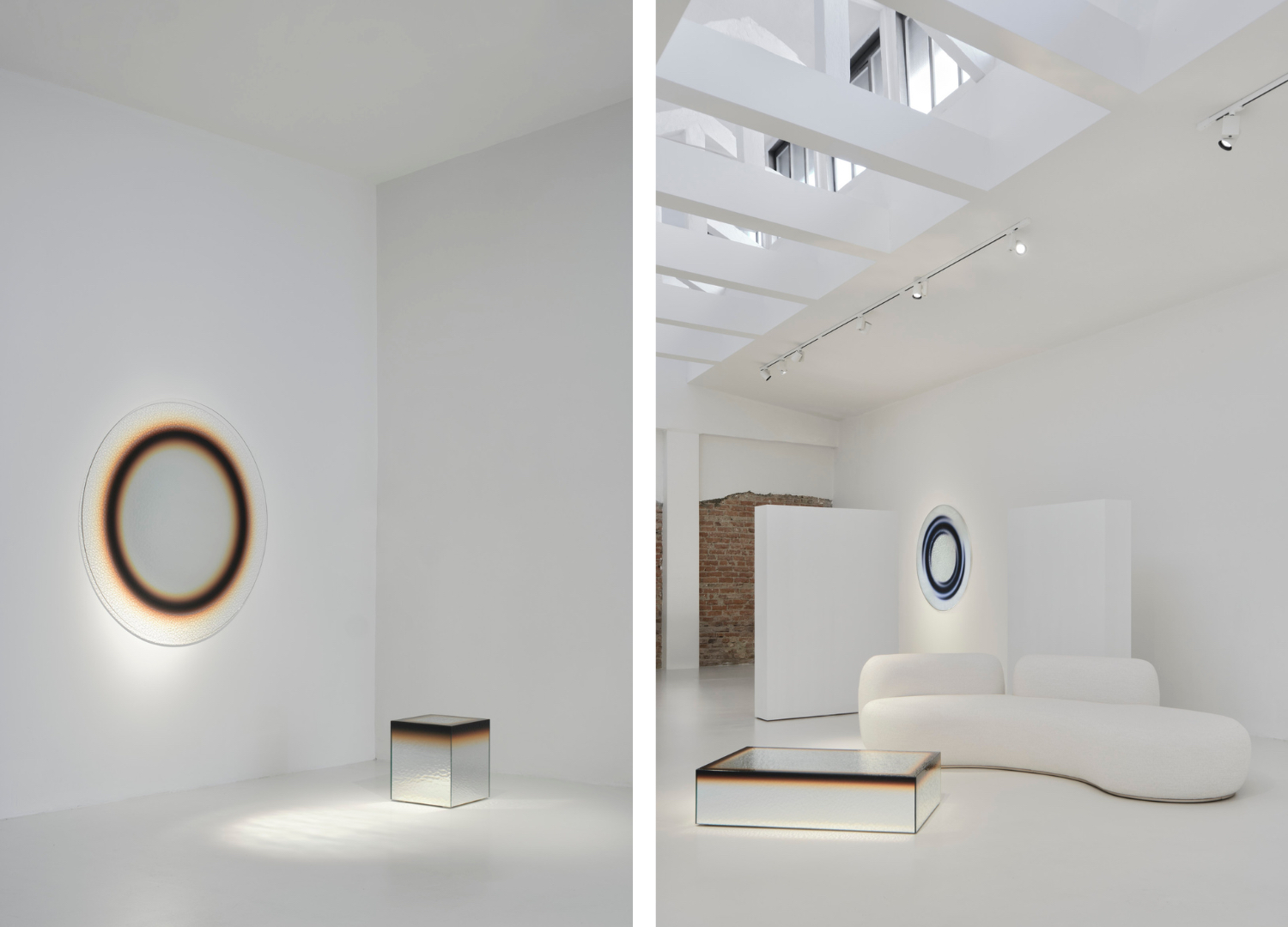 “Self Reflections” by Costantino Gucci at Movimento Gallery. Works on view: on the left, Oculus Celestia and Ilior I; on the right, Portal Lim and Ilior III – ©Marcello Maranzan
“Self Reflections” by Costantino Gucci at Movimento Gallery. Works on view: on the left, Oculus Celestia and Ilior I; on the right, Portal Lim and Ilior III – ©Marcello Maranzan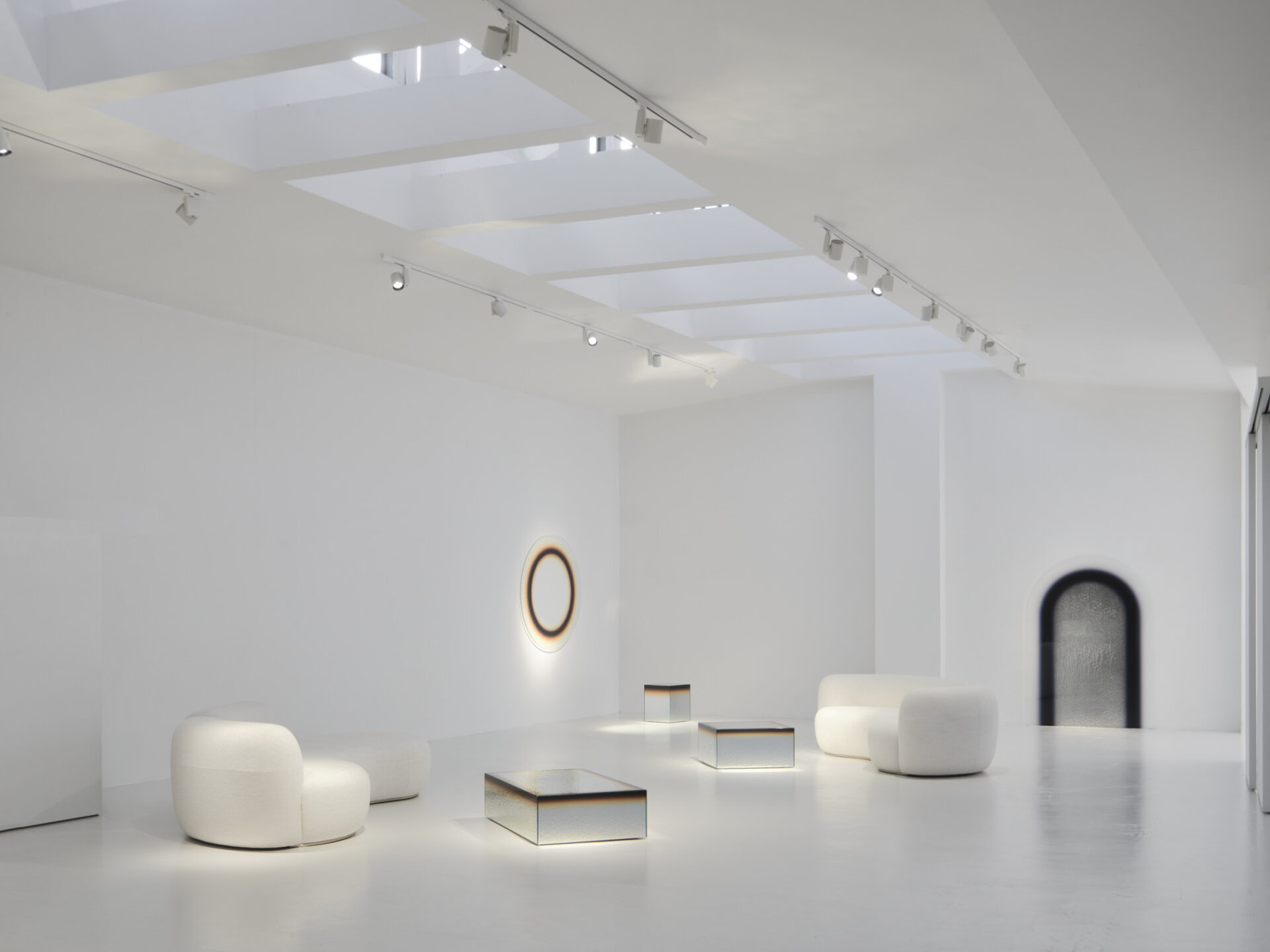 “Self Reflections” by Costantino Gucci at Movimento Gallery. Works on view: Oculus Celestia, Ilior I, Ilior II, Portal 0 – ©Marcello Maranzan
“Self Reflections” by Costantino Gucci at Movimento Gallery. Works on view: Oculus Celestia, Ilior I, Ilior II, Portal 0 – ©Marcello Maranzan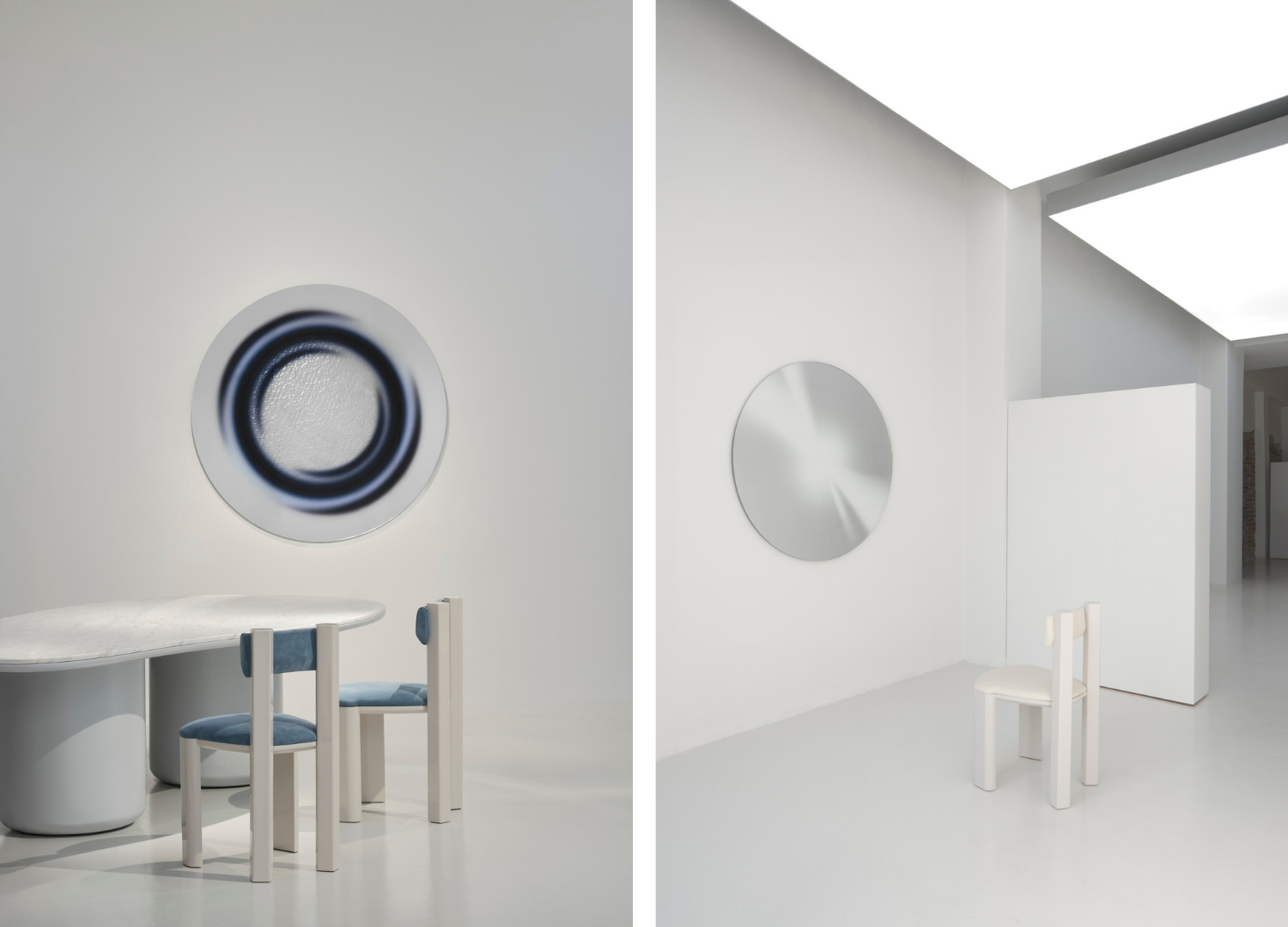 “Self Reflections” by Costantino Gucci at Movimento Gallery. Works on view: on the left, Portal Lim; on the right, Presence – ©Marcello Maranzan
“Self Reflections” by Costantino Gucci at Movimento Gallery. Works on view: on the left, Portal Lim; on the right, Presence – ©Marcello Maranzan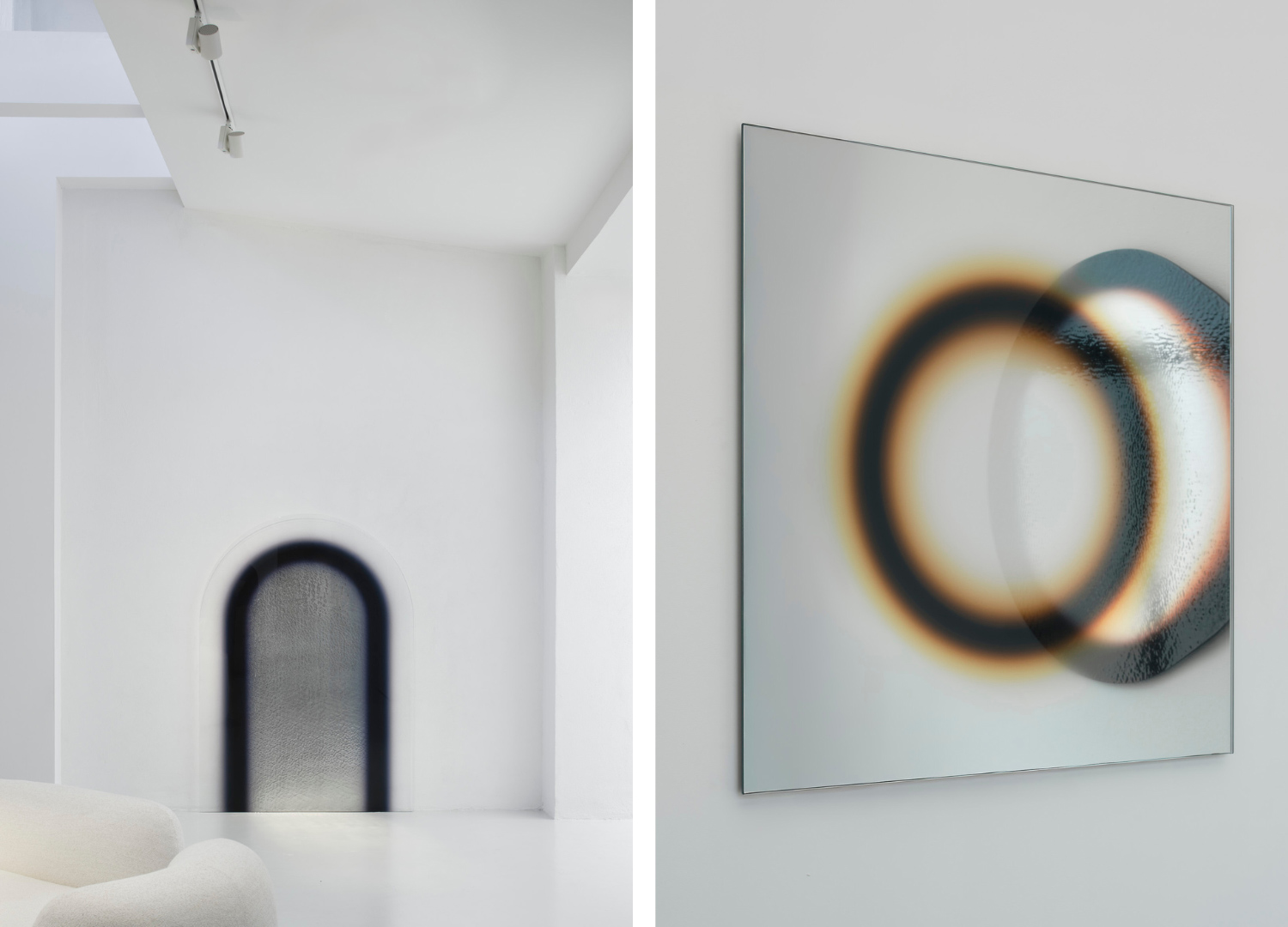 “Self Reflections” by Costantino Gucci at Movimento Gallery. Works on view: on the left, Portal 0; on the right, Sol – ©Marcello Maranzan
“Self Reflections” by Costantino Gucci at Movimento Gallery. Works on view: on the left, Portal 0; on the right, Sol – ©Marcello Maranzan
Open full width
This ongoing exploration of the reflection produced by mirrors and the resulting perception of oneself is at the heart of Gucci’s work. His first solo exhibition, Self Reflections, hosted by Movimento Gallery in Milan (September 26 – October 3), explored the deeper layers of perception, identity, and the introspective processes sparked by the experience of self-reflection.
The exhibition has marked a significant milestone in the designer’s career, during which unveiled his first collection of three-dimensional works, Ilior, presented alongside his signature mirrors, where the instability of distorted reflections intersects with the solidity of sculptural form. Self Reflections emerged from an investigation into reflection as an unstable and ever-shifting condition. In this sense, the exhibition is not only a personal milestone for Gucci but also a celebration of his long-standing and evolving collaboration with the gallery.
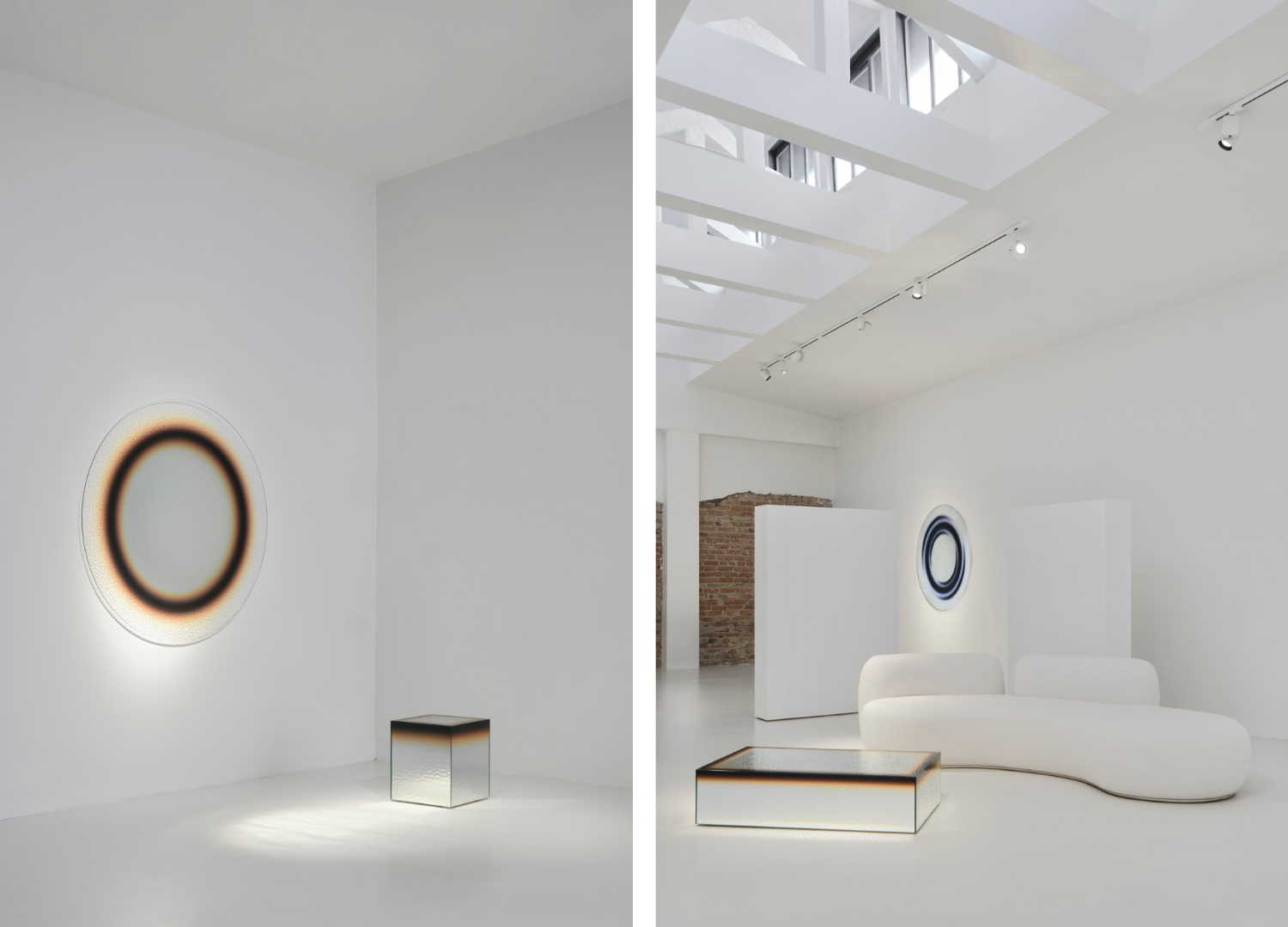
Costantino has always focused his practice on creating objects that define themselves through their relationship and dialogue with space and the observer. Using reflective materials such as glass and mirror, and experimenting with photosensitive inks, Costantino gives life to works that do not simply return a fixed, completed image, but instead challenge its stability, accuracy, and boundaries.
Through an artisan process carried out in the furnace — combining mirrors, glass, and inks — Costantino Gucci creates works built through layers and superimpositions, whose surfaces are never perfectly reflective.“I am no longer talking about reflected images, but about physical presences in a space to interact with,” says Costantino Gucci. “Each piece is a portal to be crossed,” the Florentine designer continues. But also a living work, unstable, changeable, and at the same time intensely strong, much like the subject reflected within it.
Indeed, the Ilior coffee and side tables come to life primarily through their interaction with space, shifts in natural and artificial light, and with the viewer. Like other works by Costantino, they feature undulating surfaces marked by ink that fades from black to orange. Similar to the Oculus Celestia mirror — part of the selection exhibited at Movimento Gallery — this combination of color gradation and rippled surface evokes a strong resonance with a natural phenomenon: the late-afternoon sun, whose reflection gradually “rests” on the shimmering surface of the sea.
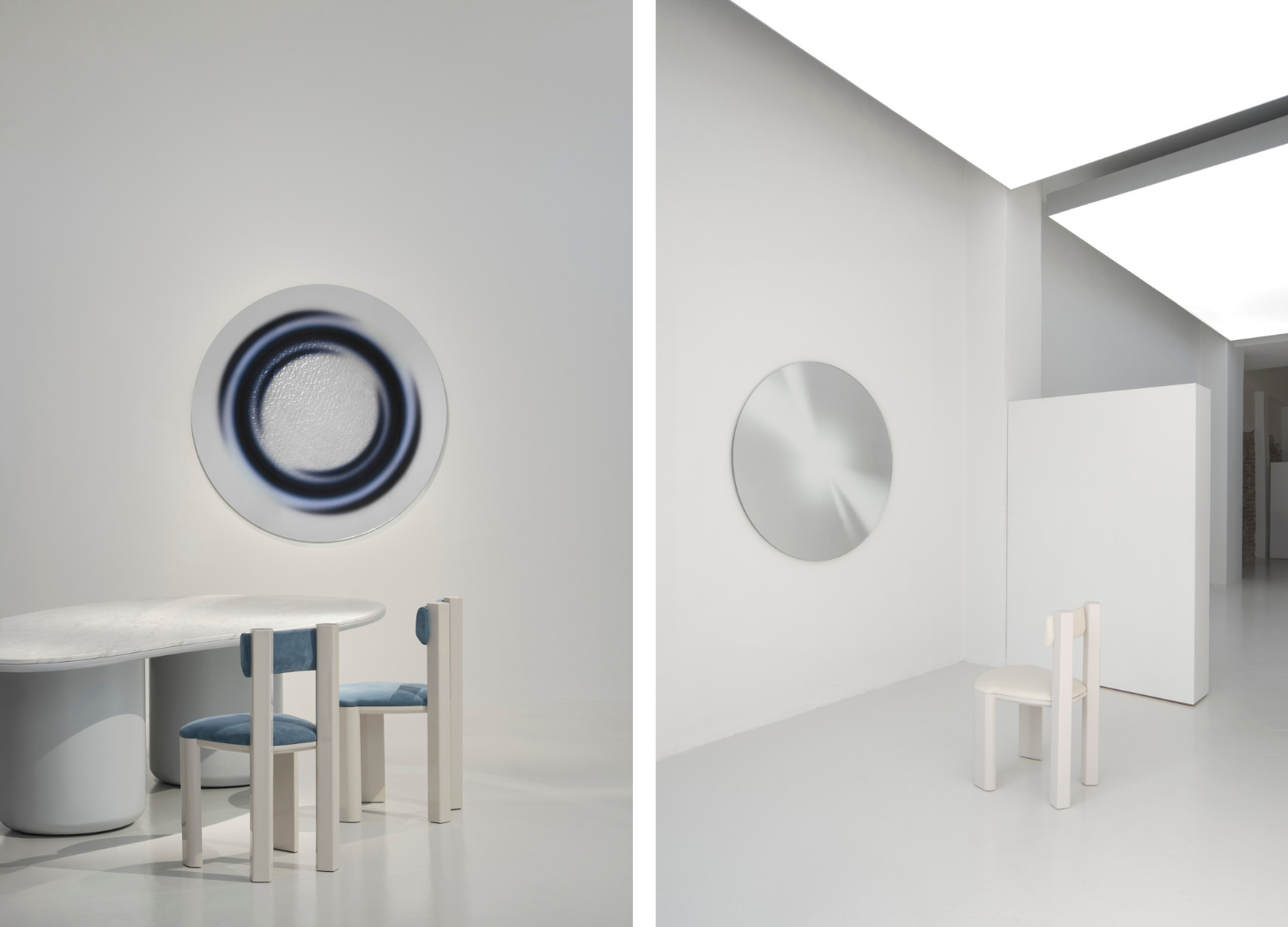
This reference to water, and therefore to a state of partial and highly poetic reflection, is also present in another work displayed in the Self Reflections exhibition: Portal Lim. Marked at its center by rings of deep blue gradation, the mirror’s surface evokes moving water, reminiscent of the ripples caused by a pebble dropped into a pond or a single droplet falling from above. Once again, the reflected image fragments, “disturbed” by this blue central presence, forcing the viewer to seek themselves in the corners of the piece or simply to embrace a new interpretation of their reflection.
The pursuit of a perfect reflected image is already lost at the outset in Portal Solaris, and even more so in Portal 0, where the reflection appears more unstable and distorted than ever. In the latter work, the relationship with the mirror becomes highly dynamic: the closer the viewer approaches the object, the more the semblance of a reflected image emerges; the further they step back, the more it seems to dissolve and merge with the surrounding space.
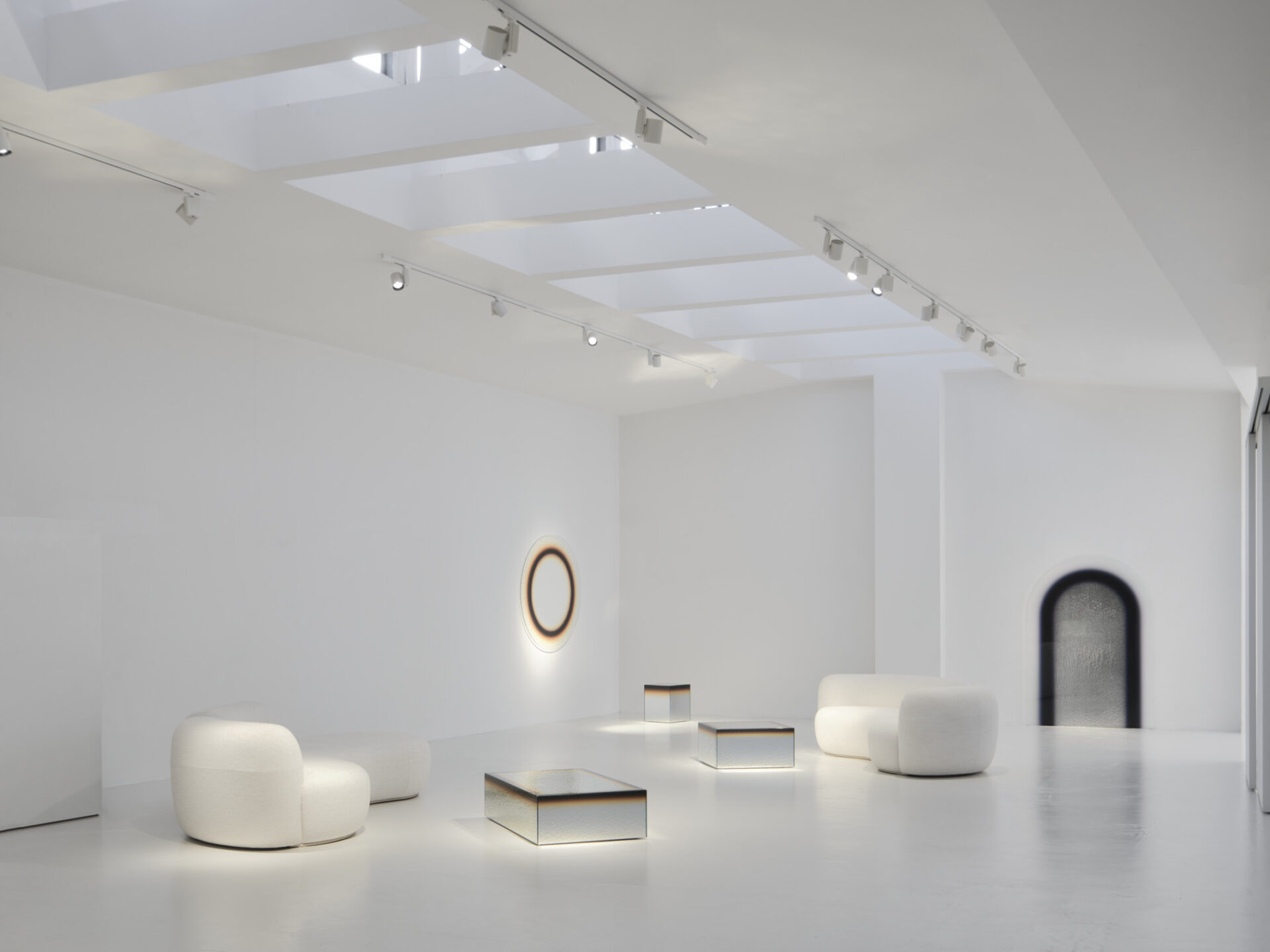
Undulating textures reminiscent of rippling seawater, intense color gradients radiating from the center or along the edges of the pieces: each and every one of Costantino’s mirrors demands a different approach to that instinctive gesture that makes us look at our own reflection. This reflection may appear distorted, blurred, partial, or obscured, and it constantly shifts depending on the light and the viewer’s position. Seeking and observing oneself in the mirror thus becomes a dynamic experience, almost a process of self-recomposition and introspection.
All ten works presented in the exhibition play on the ambiguity of the term “reflection,” understood both as a physical phenomenon and as a mental process of the individual, a moment of deep intimacy. The entire body of works not only perfectly conveyed the complexity of Costantino Gucci’s research but also its depth. The three-dimensional creations, then, mark an artistic and design evolution that, while exploring the concept of functionality, “walks” along the boundary between art and design, blurring it with every step.
- Advertisement -

